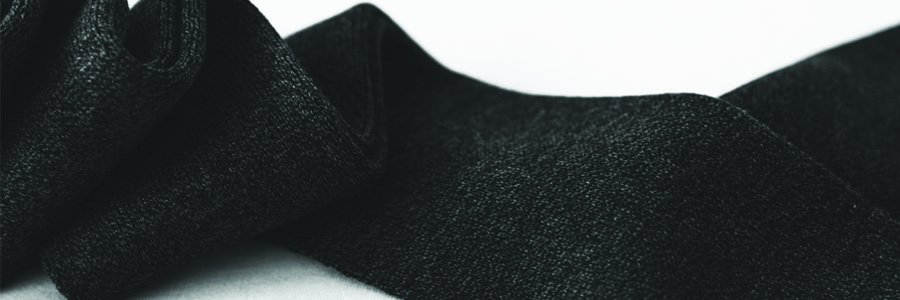Is alpaca wool the new cashmere ?
ALPACA WOOL, THE NEW CASHMERE?
Cashmere is a luxury textile made from the wool of the Kashmiri goat, mainly from the Kashmir region of South Asia. It is famous for its softness, warmth, lightness and ability to retain body heat.
It requires careful care and is considered an investment in durable, high-quality clothing due to its high cost and characteristics.
Cashmere and alpaca wool are two types of natural fibre used to make high-quality garments. Although they have similarities, they also have distinct differences in terms of origin, characteristics and use.
So could alpaca wool replace cashmere wool?
ANIMAL WOOLS: CASHMERE AND ALPACA
Cashmere and alpaca are two precious natural materials with a rich history and unique characteristics that make them prized in the world of fashion and play an important role in the economy and culture of the regions where they are produced.
Kashmir is mainly located in the foothills of the Himalayas.
It is bordered by India to the south, Pakistan to the west and China to the east. The region is crossed by several rivers, the most famous of which is the Jhelum. Kashmir is also famous for the production of cashmere, a high-quality wool obtained from Kashmiri goats. Also known as 'down', it is extracted by gently combing the goat during the moulting period, usually in spring.
This wool is used to make luxury clothing and high-quality fabrics.
Alpaca wool, on the other hand, is a precious natural fibre obtained from the fleece of the alpaca, an animal native to South America, mainly Peru, Bolivia and Ecuador.
This wool is renowned for its softness, warmth, comfort and durability. It is used to make top-of-the-range winter garments such as jumpers, scarves and coats, thanks to its excellent insulating properties.
ALPACA WOOL, A GREAT REPLACEMENT ?
Alpaca wool is renowned for its softness, warmth, comfort and durability.
It is used to make top-of-the-range winter garments such as jumpers, scarves and coats, thanks to its excellent insulating properties.
Alpaca is renowned for its exceptional softness. Its texture is often described as softer than cashmere, making it a comfortable choice for clothing against the skin. This is possible thanks to baby alpaca. Baby alpaca is a fibre that comes from the first shearing of the alpaca, making it even finer and softer than standard alpaca.
Alpaca wool is also thermoregulating, which means it has the ability to naturally regulate body temperature by wicking away moisture when you sweat.
It offers exceptional thermal insulation, keeping you warm in cold weather, while allowing your body to breathe in hot weather, keeping you comfortable all year round.
Alpaca fibres are hollow, which makes them warmer than most other fibres, including cashmere. This means that alpaca garments can keep you warm without being too bulky.
This property makes it an ideal choice for garments that need to adapt to temperature variations.
What's more, considered hypoallergenic, alpaca wool contains no lanolin, a substance sometimes found in sheep's wool that can cause allergic reactions in some people.
This wool is generally more durable than cashmere. It tends to resist wear and abrasion better. Alpaca garments can therefore last longer than cashmere garments, provided they are properly cared for.
A BETTER INVESTMENT
Cashmere and alpaca prices can vary depending on a number of factors, including quality, provenance, garment type and brand.
Cashmere is generally considered to be a luxury material, and is therefore often more expensive than most other types of wool.
The price of cashmere depends on the fineness of the fibres. The finer the fibres (measured in microns), the more expensive the cashmere. The finest cashmeres (less than 15 microns) are the most expensive.
High-quality cashmere garments, such as jumpers, coats and scarves, can command high prices due to the rarity of the fibres.
Alpaca wool is generally cheaper than cashmere. However, it is more expensive than other ordinary wools because of its superior qualities.
Alpaca prices can vary according to the quality of the fibre, its origin (some alpacas produce finer wool than others), and the type of product. The finest and rarest alpaca wool items can be more expensive.
Alpaca is valued for its exceptional warmth, softness, durability and environmental friendliness, making it an excellent choice for those looking for a naturally warm and comfortable garment. It is renowned for its fineness and lightness, making it a luxury choice for those looking for a naturally warm and comfortable garment.
It is renowned for its fineness and lightness, making it a luxury choice for those seeking a more refined style. This fibre offers high quality options at attractive prices.
.jpeg)
AN ECOLOGICAL FIBRE
Raising alpacas is considered to be more environmentally friendly than raising other animals for their wool, as alpacas tend to have a low impact on pastureland.
Cashmere is produced from the wool of Cashmere goats, which only produce a small amount of cashmere down each year. This means that a large number of goats are needed to obtain enough wool, which can lead to excessive pressure on pastures if management is not sustainable.
Appropriate grazing management is therefore essential to avoid overgrazing and land degradation. Sustainable farming practices, such as rotational grazing and land regeneration, are necessary to minimise environmental impact.
Cashmere dyeing can also have an environmental impact if it is carried out using harmful chemicals.
Alpacas are often reared in mountainous regions of South America, where they generally cohabit with other species of wildlife. This can help to preserve local biodiversity.
As far as dyeing is concerned, alpaca wool is naturally available in a variety of colours, from white and black to grey and brown. This diversity of natural colours reduces the need to dye alpaca wool, which is an environmental benefit. Fewer dyeing processes mean less use of chemicals and less water consumption, helping to reduce the environmental footprint of this natural fibre. This makes it an even more environmentally friendly option than some other fibres that require intensive dyeing.
ALPACA: EASY CARE
The care of alpaca and cashmere is similar, but there are a few points to bear in mind to preserve the quality of these high-quality natural fibres.
Both wools should be washed in cold or lukewarm water using a mild detergent. It is also
It is also not advisable to wring or rub the wool as this can damage it.
As for drying, avoid exposing it to direct sunlight. Instead, dry flat in the shade.
Storage is just as important, with cashmere and alpaca pieces best kept in dry, airy places. Belts should be avoided to prevent shoulder marks.
Don't forget: cashmere and alpaca are prone to moths. Although alpaca is less prone, you should use suitable products or lavender sachets as a preventive measure.
Both cashmere and alpaca require delicate care to preserve their softness, shape and quality. However, it's important to know that alpaca wool is 4 times more resistant than cashmere, so its original state can be preserved over time without the slightest risk of damaging your pieces with washing.
Alpaca wool is therefore a high-quality option for clothing and accessories, offering softness, warmth and durability, while being more environmentally friendly than some other fibres. It is particularly popular with those looking for exceptional comfort and superior thermal performance.


